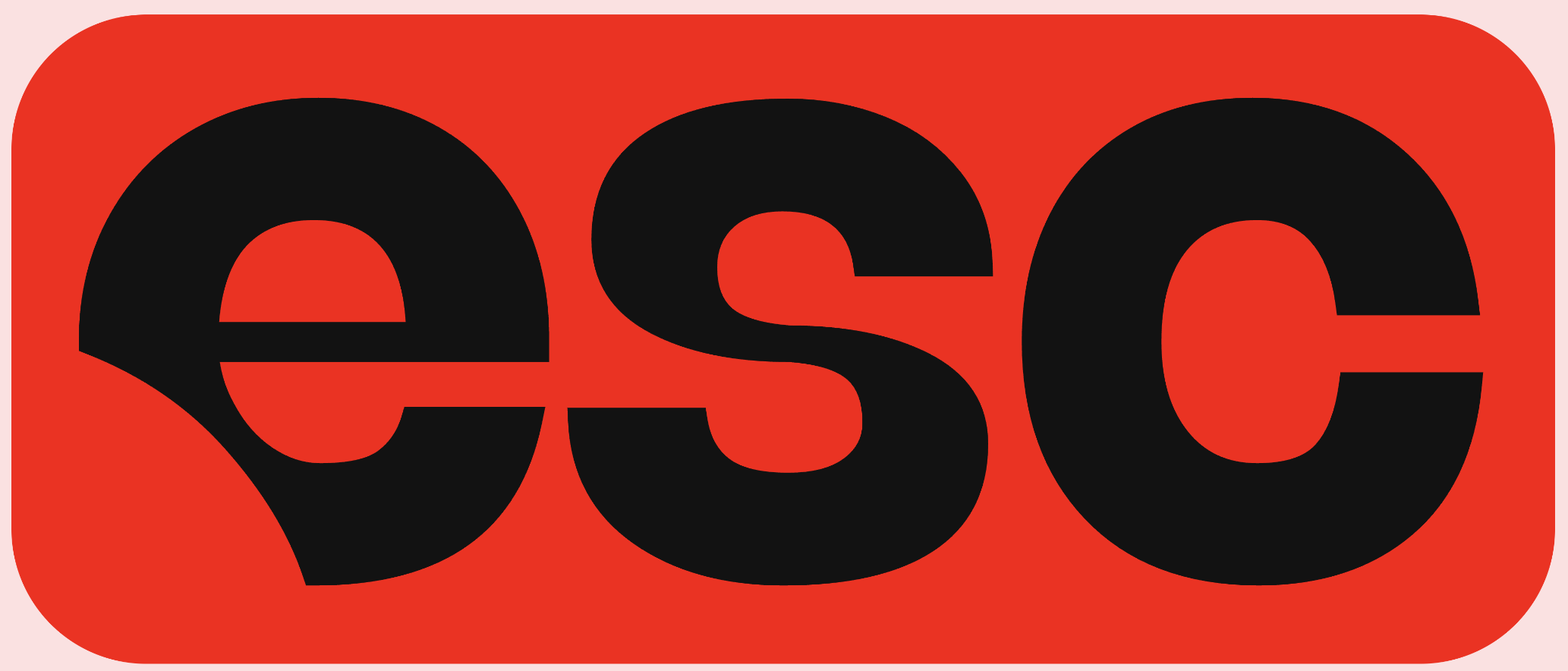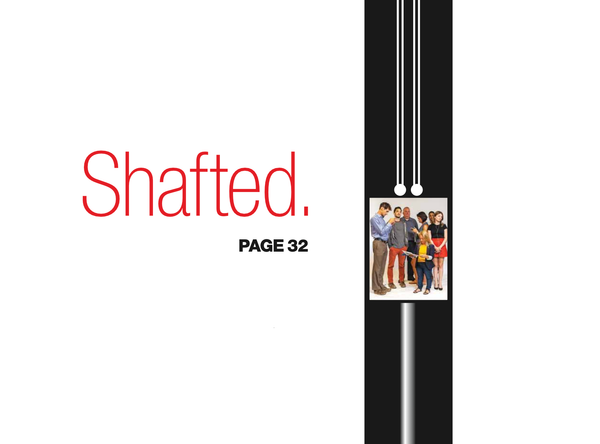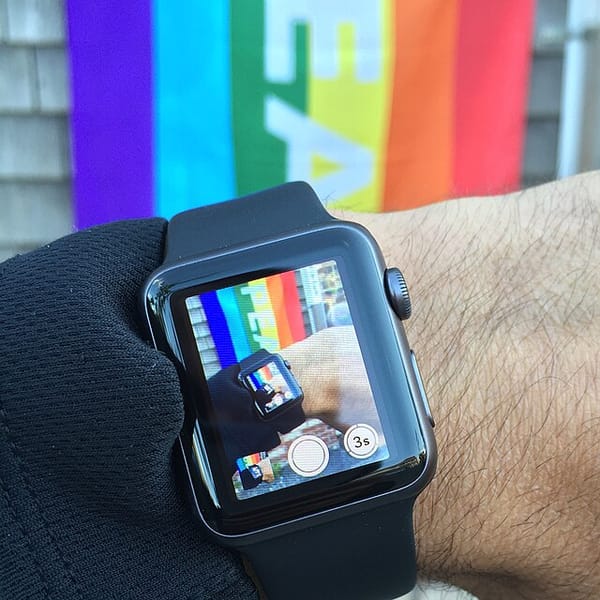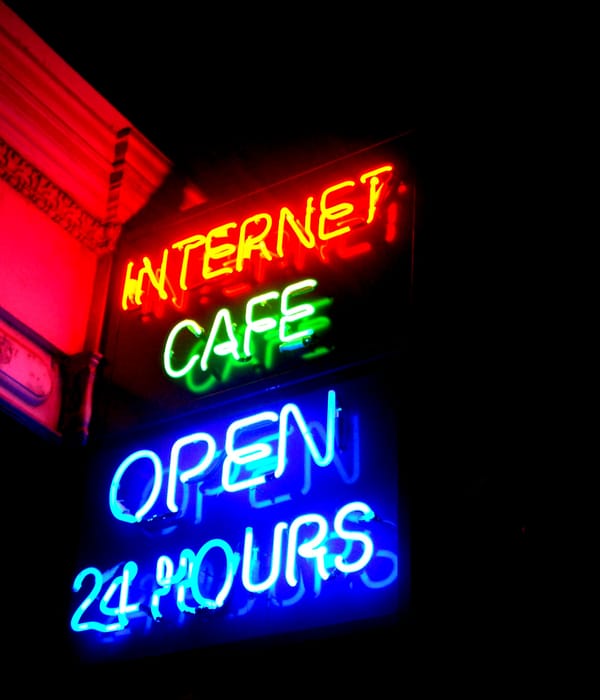What Celeste Noche saw judging National Geographic Traveller’s 13th photography competition
When it comes to the art of judging people, who is more qualified than prolific photographer and Portland In Color founder Celeste Noche? It’s not a rhetorical question. We set the table in the midst of decisions, an austere creative economy and bad “AI” imagery, asking, “How is this still OK?!”
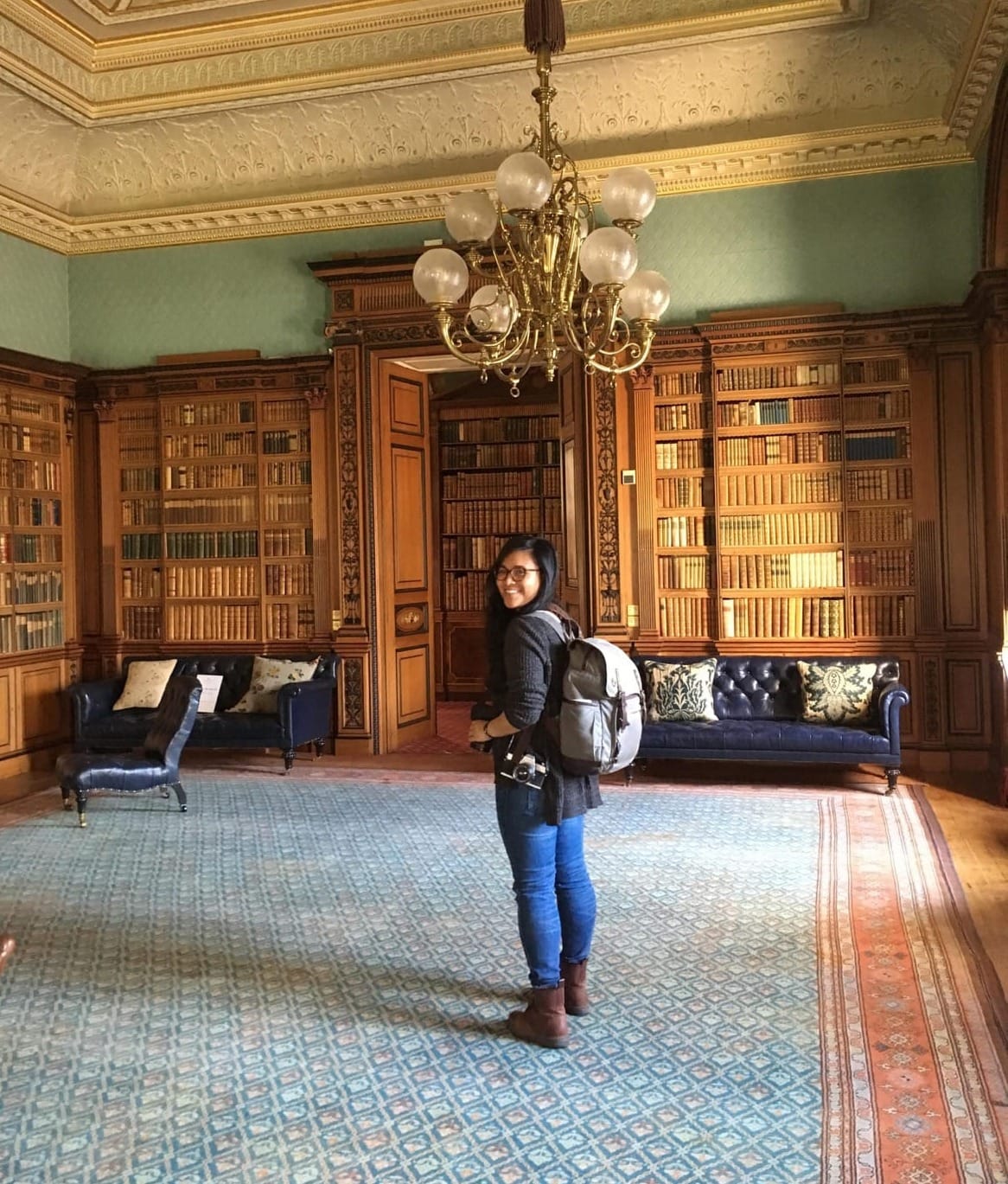
Like you, ESC KEY .CO’s second Power Lunchee, Celeste Noche, sits on the edge of the internet and peers into the void, where it seems the whole of visual culture sprawls before her in an infinite scroll. But unlike you, she must help decide which images win this year’s prizes. It’s honestly a little overwhelming.
A few weeks ago, she gazed discerningly at yet another striking image on her screen. She zoomed in. She studied its composition. She flicked back and forth between a few other pictures. She momentarily stared into the distance, pondering the weight and consequences of her decisions. She took a break outside to tend to her budding mid-spring garden in Portland, Oregon’s eastside, as the City of Roses wheezed with hay fever and an incessant stream of allergic tears. But she must return to her screen. She must look closer still at the countless images awaiting her generous, judicial eyes. She must.
To be fair, she didn’t ask to be the Law Roach of lifestyle photography, but this is her sworn duty. But seriously, Noche is in the midst of that rare kind of visual overload that also happens to be a career honor. Lucky for the entrants of the 13th annual National Geographic Traveller (UK) Photography Competition, she is one of six judges on the 2025 panel. Together, judges trawl through an overwhelming number of entries in six categories from food and city scenes to people and wildlife.
And who is more qualified to be a judge than Noche? Across her prolific editorial career, she has gazed into the viewfinder for most every major American newspaper (The New York Times, The San Francisco Chronicle, The Wall Street Journal, The Washington Post, The Los Angeles Times, you get the picture) and lifestyle glossy (Bon Appétit, Conde Nast Traveler, AFAR, Travel + Leisure, yeah, I said prolific already).
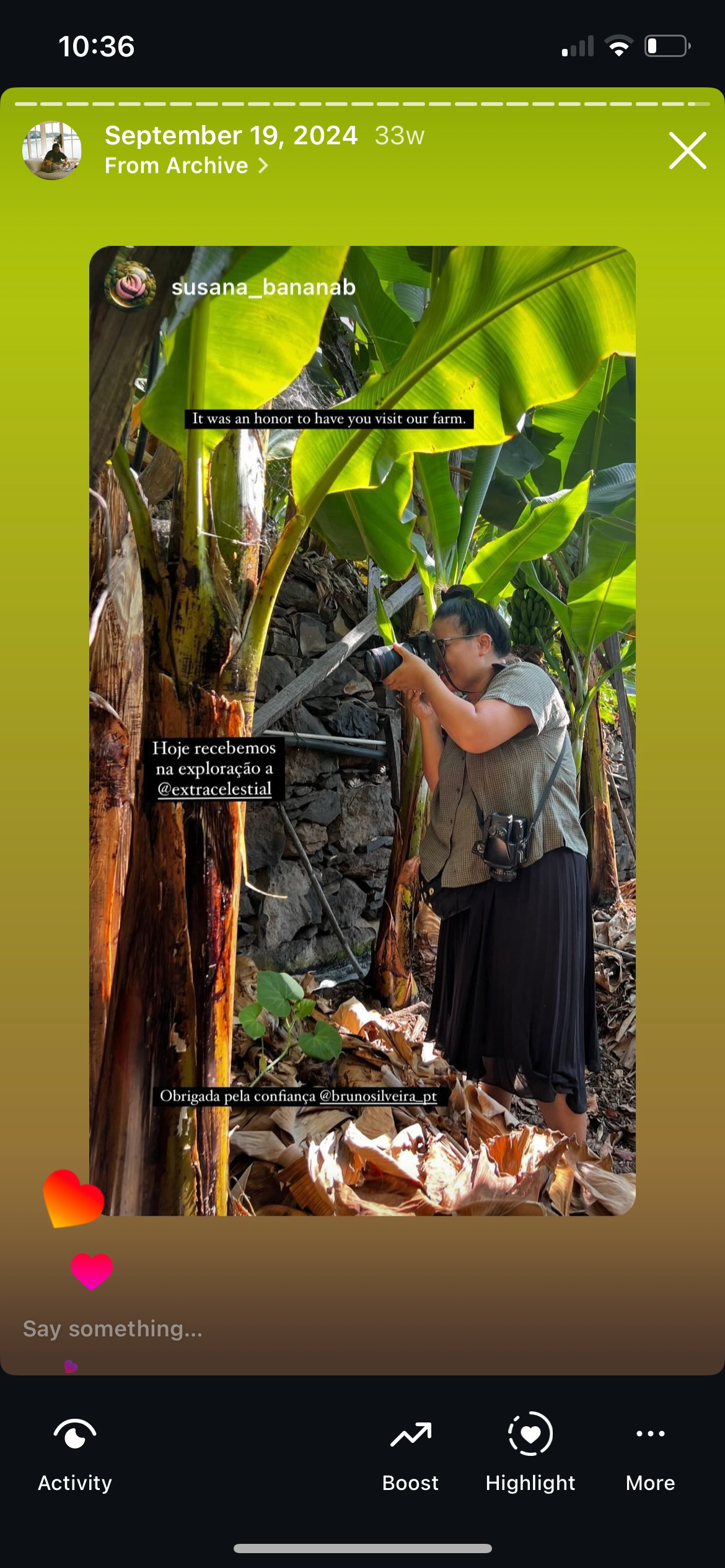

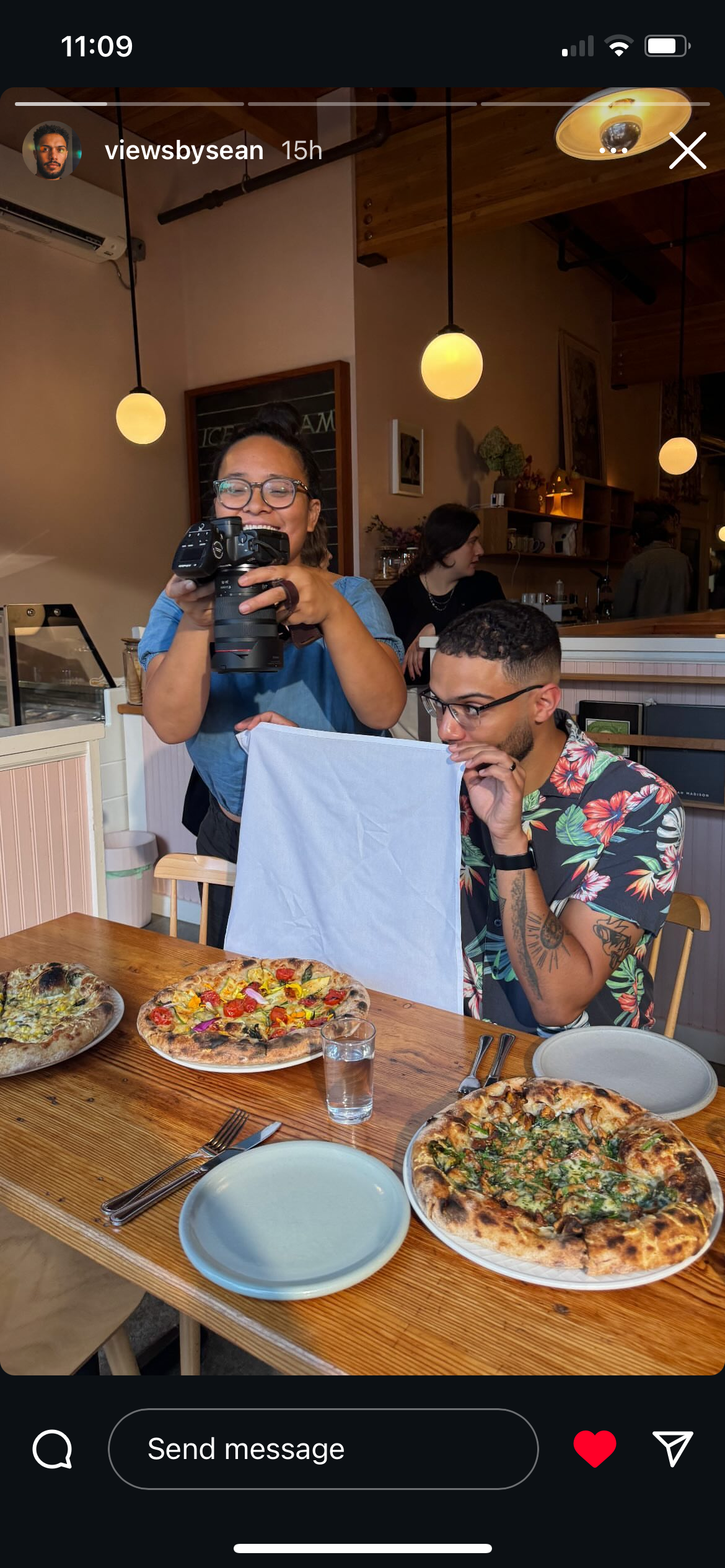
I texted Celeste Noche, pictured here, asking if she had any behind-the-scenes photos of herself. She replied: "surprise I have very few photos of myself despite a 200k+ camera roll." She sent these screenshots, which I have arranged according to the battery levels on her phone at the time of screenshot. Photos courtesy of the people she screenshotted.
Even so, in the midst of this accomplishment, the reality of being a working photographer in this economy stings. Yes, she’s chasing invoices for work completed six months prior. Yes, she’s following up with editors who’ve apparently forgotten how email works. And despite it all, she’s still vocally advocating for the industry to change. “There is this perceived idea of prestige and recognition,” Noche tells me. “And yet a lot of the same barriers still exist. It’s like ‘Congratulations! You’re a judge!’ But I have to remind myself that it’s not all of a sudden you’re respected within your industry. The industry still isn’t treating me differently.”
Indeed, working for collective justice in this industry is a central theme in her career. As the founder of non-profit Portland In Color, she’s made her mission “disrupting homogeneity” in the arts and media landscape by “highlighting the voices and experiences of Black, Indigenous, and/or people of color.” Portland In Color has changed the narrative in Oregon through its free directory of Portland-based creatives, as well as community-building and knowledge-sharing events focused on everything from financial literacy to “creative refresh” retreats.
It’s her concern with these indisputable but often ignored facts of creative work — facts of power, privilege and access — that makes her refreshingly candid about the whole undertaking. “We all have our own eyes where we see things differently, but it’s a weighty feeling to me,” she admits. “It makes me wonder if people who are more often in these positions take it seriously enough.” It is her skills in shade, snark and side-eye that equally make her an ideal lunch companion, which we have lunched together many times before. (For instance, at our last IRL lunch, an interview for a Washington Post travel feature last year, she had an apt word for the trend of hospitality companies coopting local creative culture: “vibewashing.”)
When we lunch this time, Noche has reviewed about half of the entries for the competition. “I’m a little behind,” she subtly laughs like the Grinning Face with Sweat Emoji. We grapple with what it means to be a visual artist in the age of infinitely “meh” synthetic slop; what clients destroy when they offload work to algorithms instead of humans; and the small joys of gardening with your kid. But, ultimately, the overwhelming theme in our luncheon is the art of judging people.
There’s only one rule to Power Lunch: we are granted the power to lunch anywhere in the world, but the Power Lunchee must pick only one place where we will virtually gather. This rule is now in effect.
🍴🍴🍴
JD: You made it! So, where in the world are you right now?
CN: I’m at home in Portland, Oregon right now. I say “right now” because as a traveling photographer, I’m often not in Portland.
I just got back from a trip to the Philippines where I was working on a personal project and traveling with my mom for a few weeks. I’m happy to be back home. I’m about to leave again soon for New York and LA. But it’s nice I’m here in Portland.
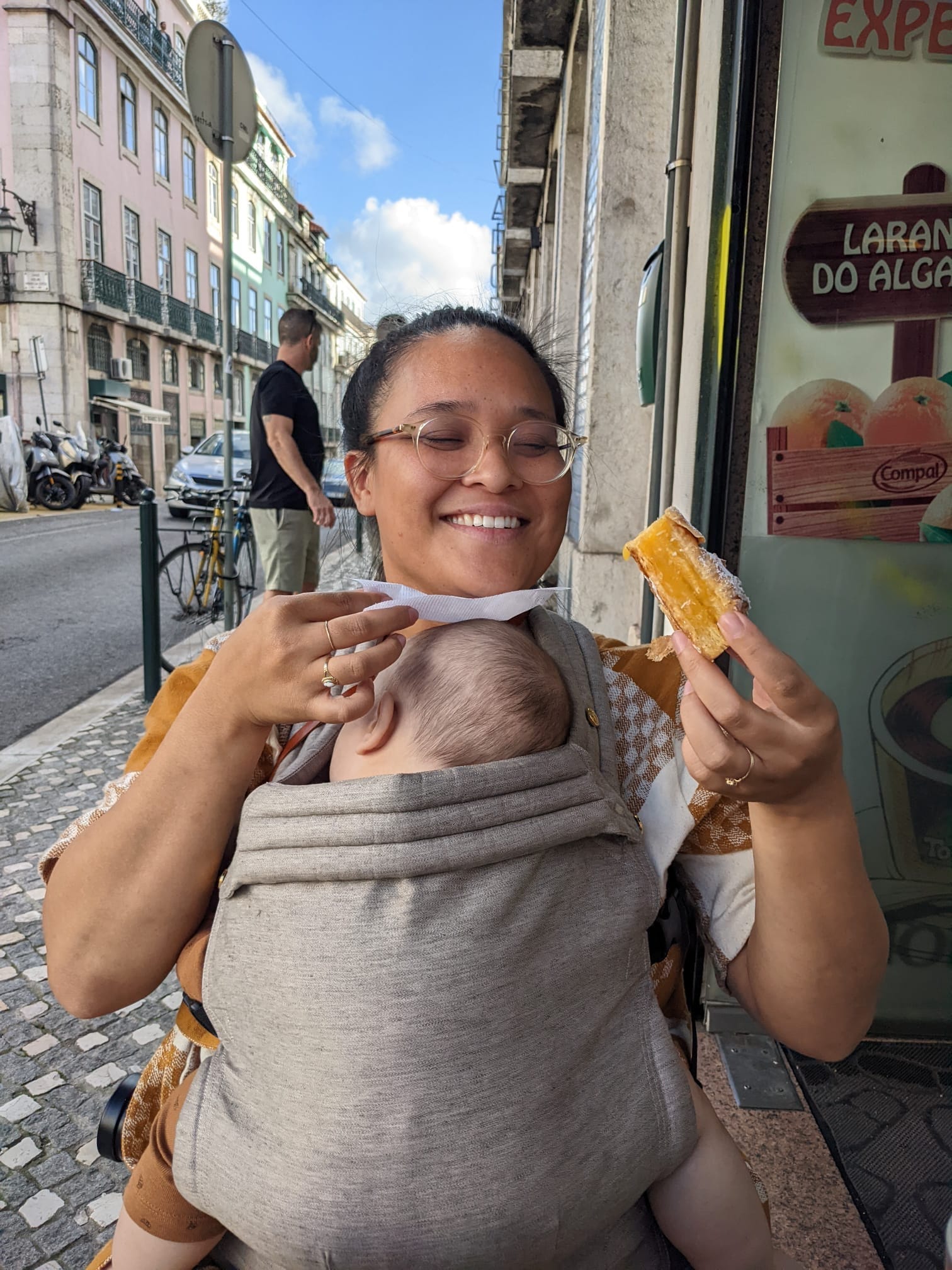
JD: I have to say, I have been really looking forward to Power Lunching with you because we do, indeed, have gossipy IRL lunches whenever we are in the same city together: London, Portland … where next? Thankfully, by the power vested in us by Power Lunch, we can figuratively “go” anywhere! And you have exceptional taste. So I’m on the edge of my seat. Where do you want us to go?
CN: OK, I admit I felt a lot of pressure to answer this question. Partially because I work a lot in food. I have many friends who are food editors or work in restaurants. And so, I felt like I had to pick the perfect place!
JD: No pressure. But I mean, yes, pressure!
CN: At first, I considered taking us somewhere really fancy? Or maybe somewhere new that nobody’s covered before? But then, I had to follow my heart. And my heart wants us to go to Jollibee in Milan, Italy.
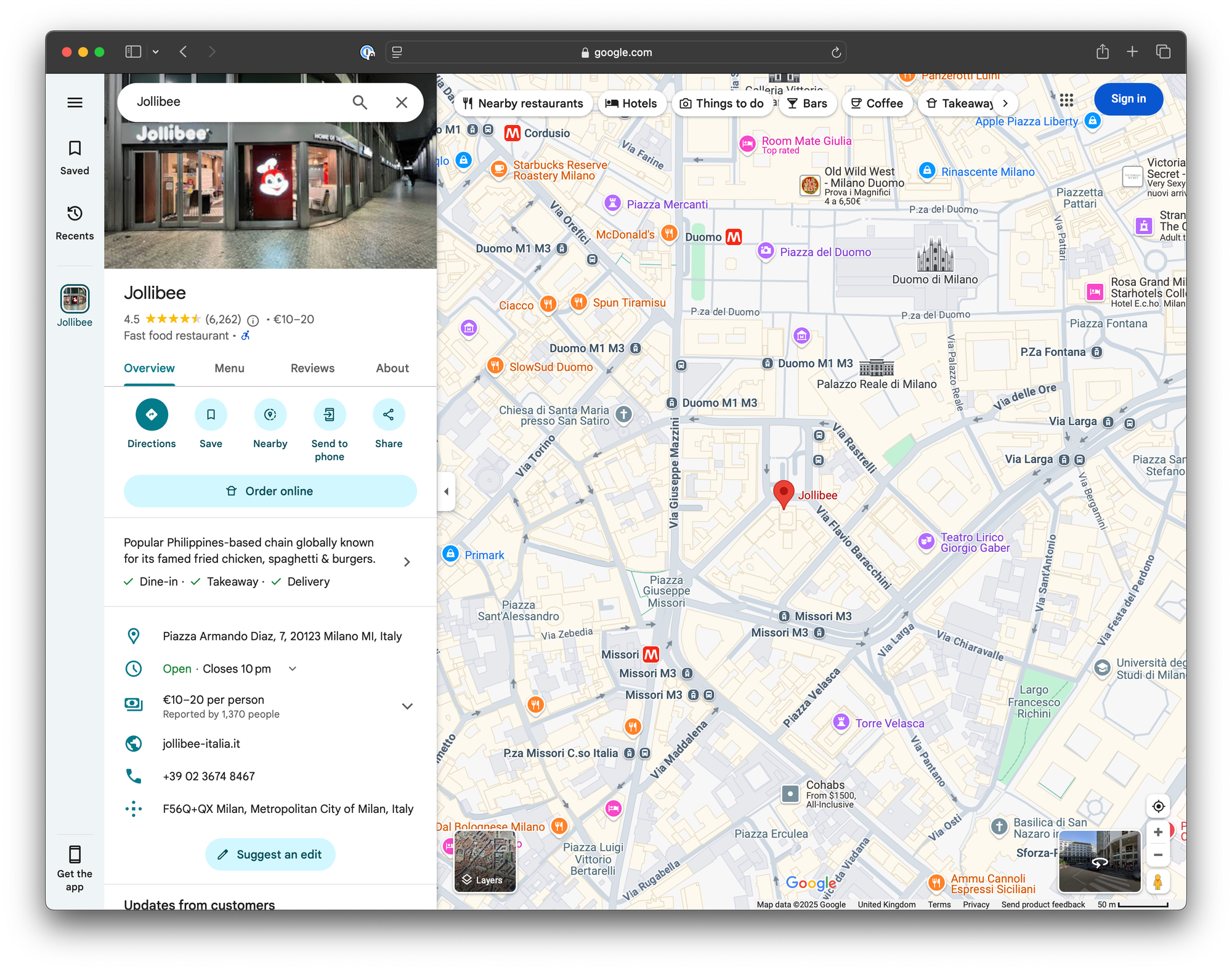
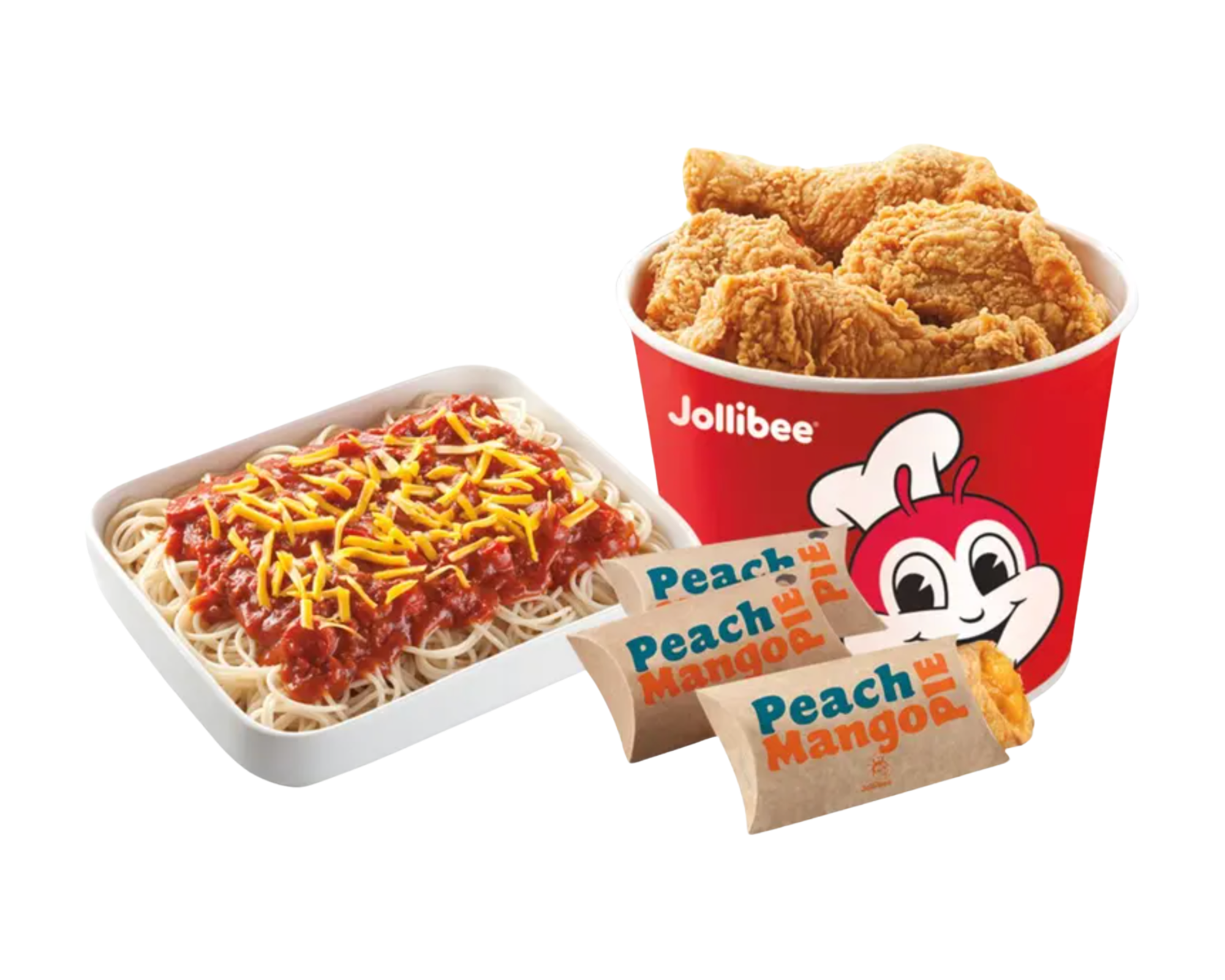
This Google Maps screenshot shows the exact location of where we did (not) go for Power Lunch. I also screenshotted some menu items from the Jollibee website. Read to the end for more on the pies.
JD: That is an elite choice.
CN: Yeah, when I discovered there was a Jollibee in Milan, I couldn’t believe it. I mean, Filipino spaghetti is a thing. So Jollibee in Italy creates a really interesting contrast. Filipino food for lunch, while being in Italy at the same time — seems like a nice fantasy.
JD: It sounds like we’ve got to order the Jolly spaghetti.
CN: Yes! We’re at Jollibee in Italy! We have to get the Jolly spaghetti! I also think their names are so cute — like Chickenjoy fried chicken with Jolly spaghetti. Fact: Anthony Bourdain loved their fried chicken and Jolly spaghetti.
That’s such a source of Filipino pride. Because the fried chicken is nice.
I mainly eat pescatarian and don’t opt for a lot of meat, with the exceptions being when I’m in the Philippines or if I’m at Jollibee.
JD: It’s settled, two rounds of Jolly spaghetti, in honor of Anthony Bourdain, of course. Now we've got that in, what’s going on with you right now? What’s new?
CN: I am currently making my way through the entries for the National Geographic Traveller’s Photography Competition. I’m a judge this year, which is pretty cool and exciting.
But when I’m not judging, I’m trying to survive the freelance life.
“I want to be in positions where I can effect change.”
JD: Let’s talk about judging people. Take me behind the scenes of this career milestone — what does it mean to be a judge for a photography competition of this caliber? Judge Celeste does, indeed, sound correct to me.
CN: I love that. Yes, as an extremely judgmental person, it feels like an honor to have a platform to judge people on a widely perceivable basis. [Laughter on both sides of this table!]
But seriously, it’s actually a little stressful because in my everyday life when I’m judging people, it’s really between me and a few select friends. Maybe a little rant on the internet.
But there’s a lot more weight to considering folks in this capacity. I was anonymously a judge for another thing last year, which I’m not to talk about. It felt disorienting to have so much say in someone else’s success based on your own personal interaction with something. Because the way people see things is so different.
What’s striking to me won’t necessarily be striking to everyone else, and yet I get to be a person that helps decide if this person receives accolades or recognition for something.
We all have our own eyes where we see things differently, but it’s a weighty feeling to me. It makes me wonder if people who are more often in these positions take it seriously enough.
JD: You are fabulously worthy of such a judicial appointment. But I feel you. Personally, the only line I can draw to the experience that you’re going through right now was that I happened to be a judge of a drag pageant at Darcelle XV Showplace in Portland. Like a decade ago. Clearly, National Geographic Traveller is far more important.
CN: No, those are equally important.
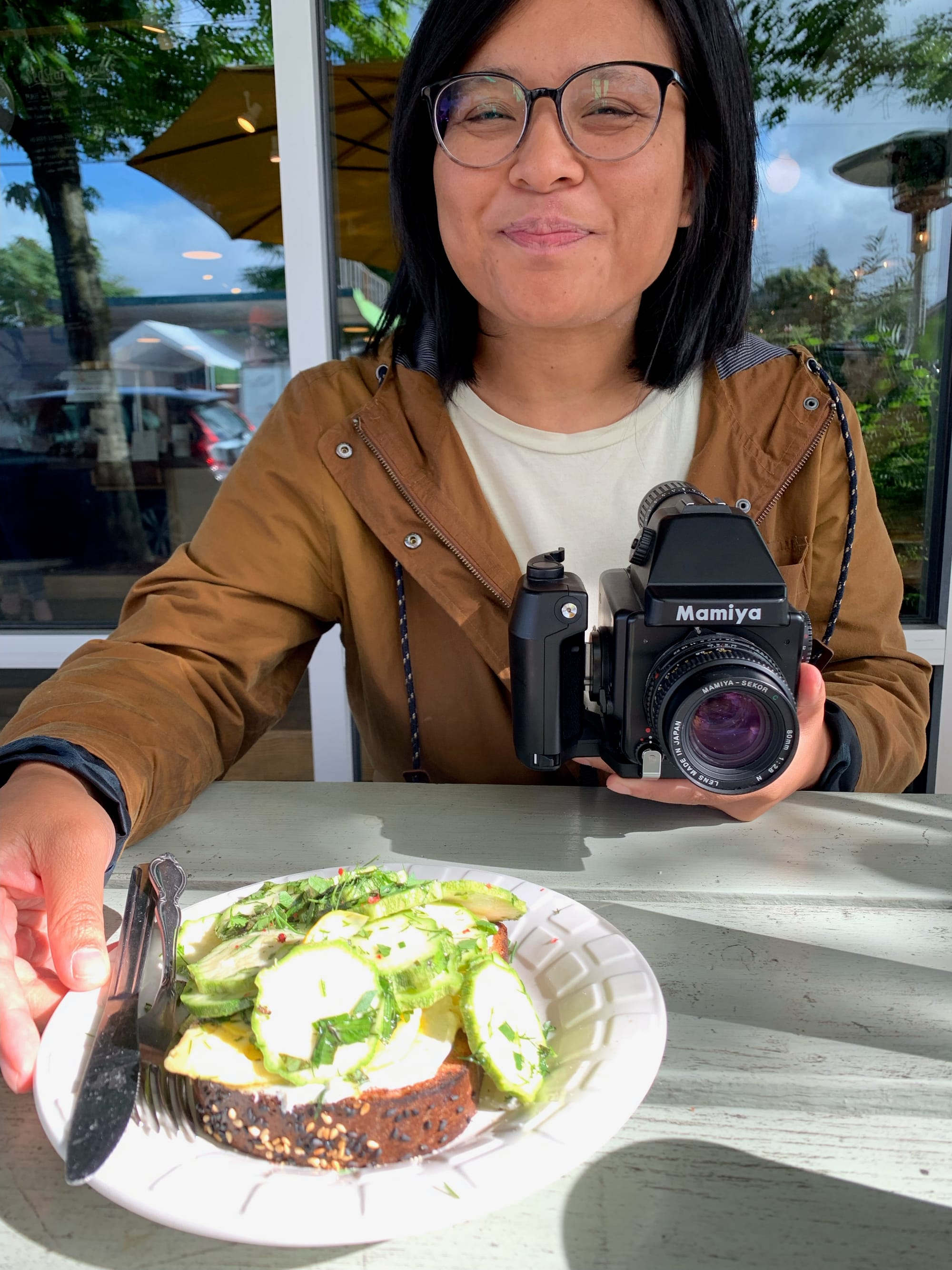

Celeste Noche is pictured with the real camera. Noche took the other photo of Shadel, who is pictured with a wooden camera. The wooden camera is Noche's kiddo's toy. It also is appropriately suited to Shadel's skill level.
JD: OK, if you insist. I think my point is, as you said, I adore judging people, and yet, I imagine we both aspire to be very fair judges, right? But as you were describing, there are a lot of nuances to what that entails — it’s not like you get to fix everything that’s wrong with the industry.
CN: Exactly. I want to be in these positions where I can help effect change and bring in other perspectives. Because historically, those spaces haven’t reflected people like us.
At the same time, it’s a weird sensation when you’re being asked to judge a major competition and still editors at those same kinds of institutions aren’t responding to your pitches.
There is this perceived idea of prestige and recognition. And yet a lot of the same barriers still exist. It’s like “Congratulations! You’re a judge!” But I have to remind myself that it’s not all of a sudden you’re respected within your industry. The industry still isn’t treating me differently.
“It feels like a race to the bottom. We continue to devalue art and creativity.”
JD: What I so admire about you is not only your ethical perspective on the world and how justice informs your work — your photos are just so goddamn good! You really invite the viewer to jump into these moments with you. What, in your mind, makes good editorial photography, especially in the travel space?
CN: It’s fascinating to consider editorial specifically because I’ve noticed there’s been a lot more blurring between editorial and commercial work. Sometimes I can’t see the difference.
Commercial work often has more budget and can create an exact moment in a specific way that editorial is trying to do but doesn’t always have the ability to.
But in the context of pure editorial, what strikes me is the feeling of connection. It should make you feel something. Certainly, happiness is a feeling. But there’s a broader range of emotions that photos can elicit — surprise, curiosity, some sense of humanity you might not see represented elsewhere in the same way. I want to feel like I’m connecting to a specific person, a specific moment, a place in a way that feels immersive.
JD: Yes! This seems like a good point to, ahem, open the library for a moment of reading — do you agree that there’s a crisis of taste in our times? “AI” photography slop, trend-chasing brands without a clear identity, the lack of funding for substance in media — these all seem to be signs pointing to, among many “bad things,” collectively bad taste?
CN: It feels like a race to the bottom. We continue to devalue art and creativity. We’re reducing what we see and consume and interact with to more and more mimicry of art or creativity, but in fact it’s neither — just algorithmic placeholders.
There are so many incredible artists doing really interesting work, but broadly, with “AI,” it feels like we value art less and less.
With such devaluation, I wonder: do we really need this technology?
To me, the use of “AI” for art is just weird— it feels like people are trying to play god in some way, where they can create a moment in any capacity with unlimited resources.
But they think it doesn’t come at a cost, but it comes at the cost of our community.
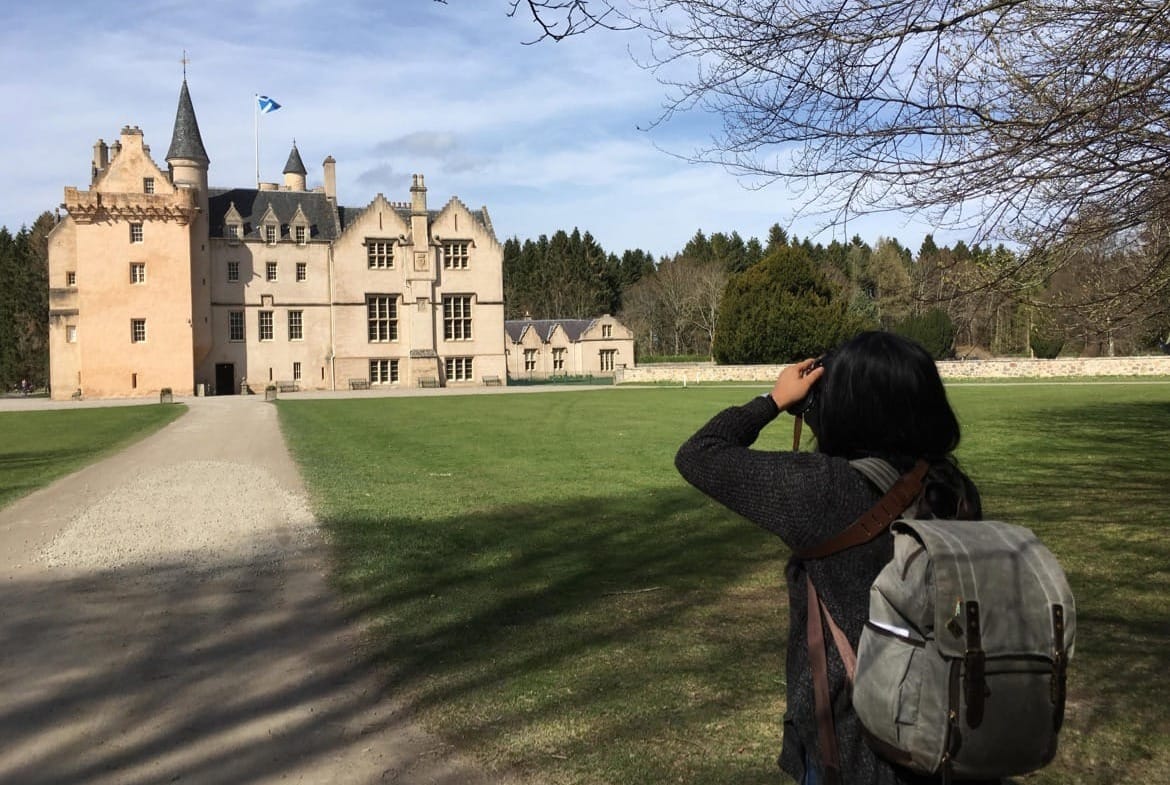
JD: Boom. That’s the mic-drop moment. Obviously, the thing leading up to our luncheon that's been all across our feeds is the launch of OpenAI’s 4o image generation capabilities, which, it promises is “capable of precise, accurate, photorealistic outputs.” What it’s led to is fake photos and videos that look scarily real — but are not. What’s your take on that as a working photographer in this austere creative economy?
CN: On one hand people are like, “look how far we’ve come with this technology!” But, again, I don’t see that as a technology we necessarily need. To your point, all of this not only devalues human labor but actually takes from human labor to create these things.
Some are celebrating it like it’s magic, but it still comes at the expense and exploitation of work that already exists. The celebration completely disregards that aspect of artist exploitation and devaluation.
Using it as an excuse to avoid engaging and supporting commissioned artists or creatives isn’t the way. It feels deeply misdirected.
“It’s a question I constantly come back to: how can we make real creative livelihoods more accessible?”
JD: Has that changed the way you’re thinking about your own craft?
CN: It’s a question I constantly come back to: how can we make real creative livelihoods more feasible and accessible to people? It shouldn’t have to be a struggle. This relates to my work with Portland In Color, my nonprofit.
But it’s also something I’m personally dealing with all the time. I don’t know how I can be 11 years into freelancing and still so completely uncertain. I know my work is valuable and I have something to contribute to the medium, but, for instance, I did a job in September and didn’t get paid until March.
How is this still OK? That’s the big question, really.
JD: I do feel like that’s the bigger question hovering above all of this, isn’t it? It’s not like “AI” is an entirely new pressure. It’s repeating and accelerating other patterns of exploitation and devaluing of creative work that aren’t new. It massively scales the massively wrong idea that creative work doesn’t deserve to be paid for in the same way as other work.
CN: Yes, that’s it: How is this still OK?! That’s the question we all need to be asking our industry more loudly.
JD: I was chatting with a fashion photographer back in March whose client was an allegedly “sustainable” fashion brand who said they were lowering their carbon footprint by replacing the photographer with synthetic image generation. The photographer was afraid to speak much about it because they didn’t want to hinder their career. So, a lot of people who are concerned about this aren’t always expressing it publicly?
CN: Yeah, absolutely. There’s such a perception of trying to be palatable and ahead of the curve and engaged with technology. And in the past, that was one way you could improve your profitability. But right now, it feels morally bankrupt, honestly.
JD: There are a lot of morally bankrupt things happening in the world right now. But I also wanted to ask if there’s anything that’s giving you life or hope, even if it’s a small thing?
CN: As things continue to get worse, seeing the sanctity of our own home spaces becomes more evident to me as a person who is usually all over the place. No one ever knows where I am. Folks have joked I should create a “Where in the World Is Celeste?” website a la “Where in the World Is Carmen Sandiego?”
It's my kiddo, my home, my garden. I’m valuing my time at home differently than I have in the past because it feels so protected and a place I’m marginally more in control of. I’m learning from my kid, and my kid is affecting who I become as a person. We have this space to be in nature. My garden is really important to me.
🍴🍴🍴
JD: Dessert is always a good idea, right?
CN: It’s got to be the peach mango pie. And in true Filipino fashion, we’re going to get five or so more to go.
